
‘It’s closing in on 15 years since director Frank Perry’s untimely death from prostate cancer at the age of 65. A maverick, yet underrated filmmaker, Perry was not necessarily the auteur of future contemporaries like Scorsese, Coppola and Spielberg; however, his contributions to cinema in the decade before these iconoclastic directors, helped pave the way for the independent cinema that would be nurtured in the 1970s and explode through the 1980s and 1990s.
‘Though his films contain an interesting level of technical brevity, Perry was not a technical director in the same sense as Stanley Kubrick. He was a humanist, a storyteller whose style was influenced by the deep, often complex, psychological backgrounds and struggles of his characters. In 1993, Perry himself put it best when he said his films were about, “humanism, with that which celebrates what is to be human: vulnerability, fallibility, fragility.” In analyzing the films in his body of work, it is evident that this was what was at the heart of a Frank Perry picture – the human element, whether triumphing or faltering to the struggles surrounding.
‘Susan Isaacs, best-selling author and screenwriter of two Frank Perry films (Compromising Positions and Hello Again), in remembering Perry and what he looked for in a film recalled, “He was drawn to the richness, he needed a good story…a combination of important and potentially successful. Important in that it could be conceivably, in his hands, the best of its kind. Whether it was a comedy or something like The Swimmer. Whatever it was, he wanted it to be recognized as first rate.”
‘Perry was 31 at the time he directed his first feature, David and Lisa. He had been involved heavily in stage productions, including a stint with the Theater Guild in New York City as a stage manager and associate producer, before turning his sights to directing films. In 1961, when he and his first wife, Eleanor, began looking for a story to turn into a low-budget feature, the Hollywood Studio System still largely ran the film industry. The idea of raising funds from small investors and making films without the backing of one of the major studios was a new and innovative approach – a forerunner to the influx of independent cinema to come in the following decades.
‘Though many productions produced outside the confines of the Hollywood system were rarely finished, or faltered both critically and commercially if completed, the Perrys were hopeful and invigorated by the recent success of such pictures as John Cassevettes’s Shadows (1961). It was Eleanor’s daughter, Ann, who brought the book “Lisa and David” by Brooklyn psychiatrist Dr. Theodore Isaac Rubin to her mother’s attention. Immediately, the Perrys knew what their story would be. Eleanor wrote the script based on the book, which dealt with the growing relationship between a schizophrenic girl and a young man who is deathly afraid of being touched for fear of dying.
‘Once the script was completed, the couple budgeted the film out at $200,000. Perry, who had spent time fund raising while at the Theater Guild, sent letters out to 500 prospects that had previously invested in stage productions. Much to his surprise and chagrin, the effort proved fruitless, and within three months the Perrys were living primarily off of their Diner’s Club card. It was many more failed contacts and one major backer pulling out later before the couple finally found solid footing from a textile manufacturer who needed a tax loss. With the textile manufacturer’s $60,000 investment, Perry and first-time producer, Paul Heller, were able to secure the rest of the necessary funds to complete the film from small block contributions.
‘The film was scheduled for a five-week shoot and almost everyone involved in the making of the production were novices in regards to narrative filmmaking. It was Perry’s first time as a film director; Eleanor’s first time writing a script; Paul Heller’s first time producing; and the most experienced of the two leads, Keir Dullea, had one picture under his belt. The most experienced person on set, at least in feature films, was veteran actor, Howard Da Silva, who played psychiatrist Dr. Swinford – primarily out of the joy of having work for the first time in almost 12 years due to being blacklisted by the House of Un-American Activities Committee through the majority of the 1950s.
‘Perry, who asked Heller, “Paul, how do you make the camera start?” the night before the first day of shooting, brought the film in on time and under budget. The premise of the film is quite simple: two youths, both with their own psychological problems that hold them back in society, meet each other and, ultimately, help each other get over their mental and emotional blocks.
‘Ladybug Ladybug, which was released one year after David and Lisa, is a biting drama on the effects of paranoia and panic that America was experiencing during the height of the Cold War. The film depicts the reactions of a group of rural school children who are evacuated by teachers due to a defense system warning of impending nuclear attack. Though it is unclear whether or not the system is faulty, the effects of fear on the human psyche are explored throughout the film. This exploration, somewhat amplified due to the fact that children are more pre-exposed to fear than adults, leads to an overwhelming study of impending doom and the length one will go to protect themselves or, at least, feel protected.
‘Following a brief foray into television with a series of Truman Capote-written holiday films (A Christmas Memory and Thanksgiving Visitor), Perry returned to the big screen with an adaptation of the John Cheever short story The Swimmer. The film, shot in 1966, was not released in theatres until 1968. Perry left near the end of production due to creative differences – Sydney Pollack finished the remaining scenes.
‘The story centers on Ned Merrill, played by Burt Lancaster, a businessman and presumably well-regarded member of a small suburban town outside of Westport, Conn. A father of two girls and a loving husband, he seems the epitome of the American Dream. The movie, as was Ladybug Ladybug, which was released one year after David and Lisa, is a biting drama on the effects of paranoia and panic that America was experiencing during the height of the Cold War. The film depicts the reactions of a group of rural school children who are evacuated by teachers due to a defense system warning of impending nuclear attack. Though it is unclear whether or not the system is faulty, the effects of fear on the human psyche are explored throughout the film. This exploration, somewhat amplified due to the fact that children are more pre-exposed to fear than adults, leads to an overwhelming study of impending doom and the length one will go to protect themselves or, at least, feel protected.
‘Last Summer, which was released in 1969, was Perry’s follow-up to The Swimmer on the big screen. The film was based on the novel by Evan Hunter and, again, scripted by Eleanor. Though Last Summer is small in scale in regards to actors and locale, the story and acting is top notch. The story focuses on a group of four adolescents and their coming-of-age summer on Fire Island. Barbara Hershey, Richard Thomas, Bruce Davison and Catherine Burns portray the characters of Sandy, Peter, Dan and Rhoda, respectively.
‘In the beginning of the film, Sandy, a beautiful, tanned girl from an affluent background, finds a seagull that has caught a fishing hook in its throat. Peter and Dan, seemingly typical blonde teenage beachcombers, are walking down the beach with a radio and find Sandy with the seagull. They help her dislodge the hook from the bird’s throat and, henceforth, form a triangular niche of sorts, hanging out, drinking and even swimming nude together. It is unclear whether or not Sandy is a virgin, though it is confirmed that both Peter and Dan are. Throughout the course of the film, the trio exudes an enormous amount of sexual tension between each other without actually depicting any form of true sexual contact.
‘Diary of a Mad Housewife followed a successful format, that by this time, the Perry’s seemed to have mastered. Eleanor adapted the film from the novel by Sue Kaufman, which centers on a frustrated New York housewife. Carrie Snodgress, who won a Golden Globe and was nominated for an Academy Award for Best Actress for her performance, played the wife; Richard Benjamin portrayed her husband; and Frank Langella starred as the playboy author whom she has an affair with.
‘This sort of sharp drama is where Frank Perry seemed top of his game. Like Last Summer, David and Lisa and The Swimmer before, Diary of a Mad Housewife is an intriguing study of social mores in upper class circles. Carrie Snodgress’s character, Tina, is the wife of successful lawyer, Jonathon. They live in a posh Manhattan apartment and she is every bit the typical housewife, cleaning, keeping house, raising the kids and cooking the meals. Jonathan is very type-A and one of the most awful characters, without actually being evil, that I have seen put on screen. He is condescending, spiteful, critical and unappreciative of almost anything and everything that Tina does, yet primarily in an indirect manner.
‘Perry’s most experimental film was probably Play it as it Lays, his next release after “Doc.” The film which focuses on the downtrodden events of actress Maria Wyeth’s life, portrayed in a Golden Globe nominated turn by Tuesday Weld, is a cynical, acidic look at the Hollywood of the 1970s. Wyeth is married to hot new director Carter Lang, an egomaniacal auteur whom is casting his upcoming third film. Their relationship is strained by a daughter in an institution, a recent abortion and pressures of prior success attributed from Wyeth’s previous roles in Lang’s movies.
‘The story is told in a series of vignettes that mix elements of the past, present and future, including clips from the film-within-a-film, fictional Carter Lang’s first movie, Maria. Maria is a documentary-style introspective of Maria herself, focusing on her life, trials and tribulations. The experimentations in narrative storytelling mixed with vocal stances on social issues of the time such as abortion, institutionalization and homosexuality, make Play it as it Lays a very modernist film. This continued genre experimentation by Perry points to the universal abilities he had as a director and, though there are films in his catalog both before and after this one that didn’t fully succeed, many were brought off with an air of brevity that helped cement the reputation of his contemporaries in American Cinema.
‘Perry was interested in people, life and how we live it, whether it was through joyous times or times of trouble and heartache. Like most directors, the ideas in his films seem to be as important as the stories themselves. What you take away from a Frank Perry picture, whether it was good or bad, is an analysis of the human nature and spirit. No filmmaker deserves praise for each of his or her works, but it seems Perry’s body of work has been, undeservedly, largely forgotten.’ — Matthew Mandarano
____
Stills
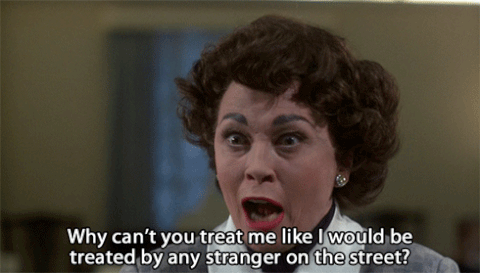



















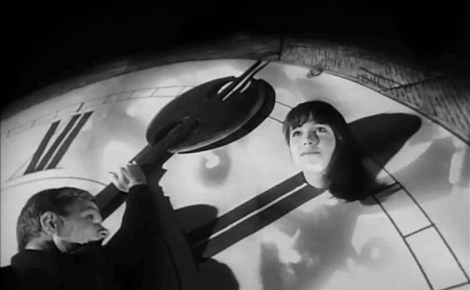






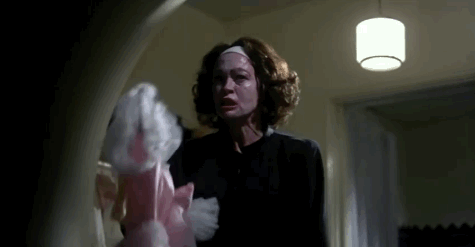



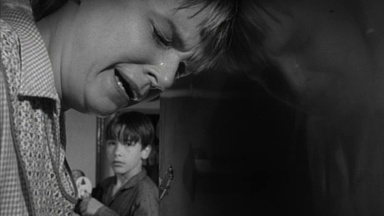






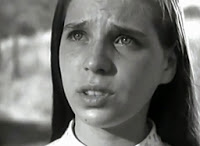

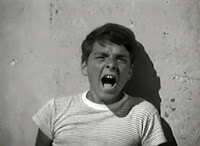

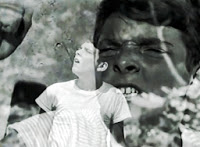



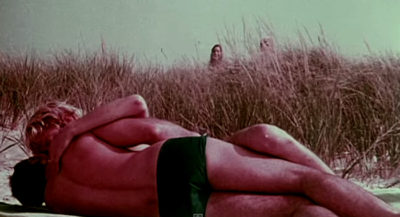








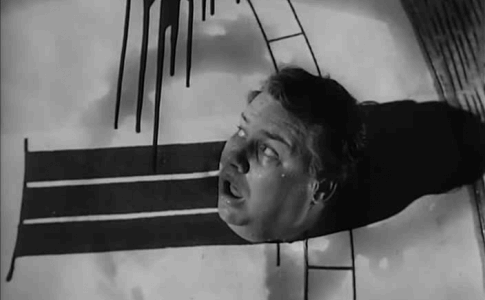








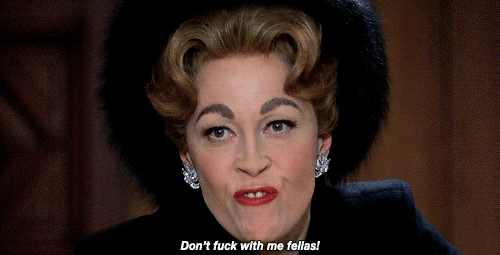







____
Further
FRANK & ELEANOR PERRY WEBSITE
Frank Perry @ IMDb
Along the Bridge: The Films of Frank Perry
Frank Perry obituary @ NYT
MY DINNER WITH FRANK AND ELEANOR
Author Barbara Goldsmith and Director Frank Perry Only Collaborate Off Camera
Frank Perry @ MUBI
Character Is Story: The Life & Films Of Frank Perry
Desperate Characters: The Cinema of Frank & Eleanor Perry
Justin Bozung on Director Frank Perry
Best Director Home Stretch: Frank Perry for David and Lisa
The Prime of Frank Perry: MIA on DVD
Two by Frank Perry: Man on a Swing (1975) and Dummy (1979)
Mommie Dearest and The Swimmer: Two Bizarre Films by Frank Perry
Bruce LaBruce on Play It as It Lays
The Cinema of Frank and Eleanor Perry Finally Gets Its Due
Frank Perry: In the Cut
____
Interview
by Roger Ebert
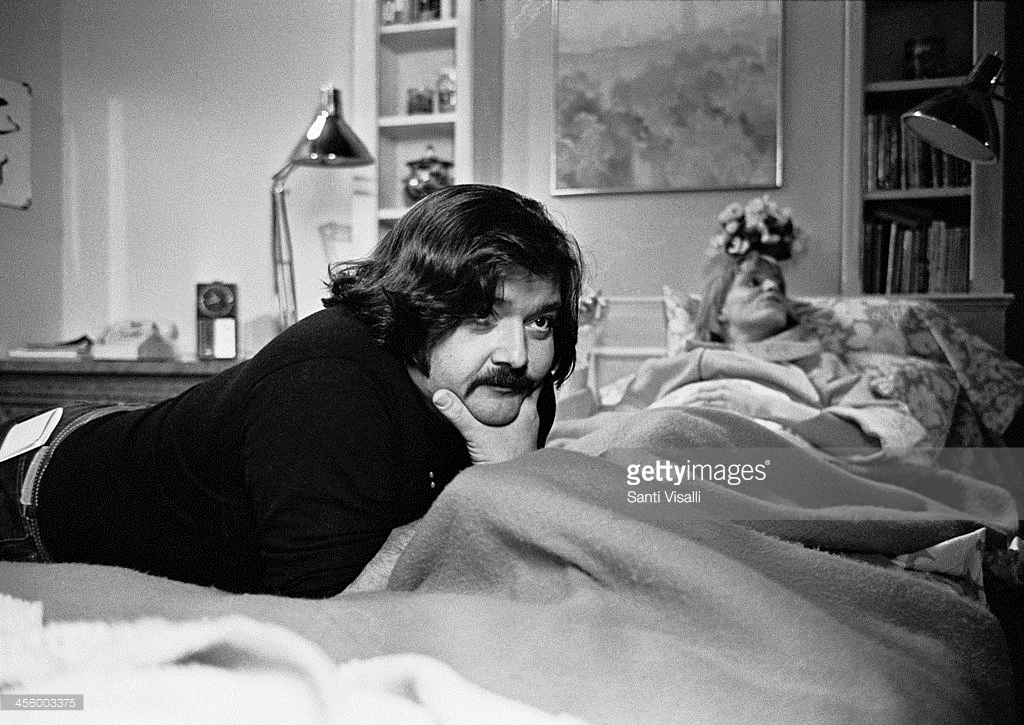
During the earlier days of the Venice Film Festival, the face of Frank Perry had worn a slightly distracted look. He was there, he was listening, he was talking, but somehow his mind seemed to be on a slightly different frequency than anybody else’s. This is a common state and not unique with Perry; all movie directors have it as the day for the first public showing of their newest movie grows near.
In Perry’s case, there was a long time to wait because “Play It as It Lays” had been scheduled for the last day of the festival. The initial critical reaction – from the Italians, the visiting overseas critics, and the opinion-mongers in the sidewalk cafes – would have a lot to do with the film’s eventual success. It helps to be able to add a line to an ad saying you were the hit of the Venice Film Festival.
So anyway, Perry was looking a mile distracted but he began to loosen up when the Critics Jury came in with their awards. They’d seen an advance screening of Perry’s film and had voted to honor Tuesday Weld with the Lion at St. Mark for the festival’s best performance. The movie itself placed second in the balloting (10-7) after a Swedish film named “Foreigners.”
So Perry could begin to relax, because now it looked like he had a success on his hands and that the months of work had added up to something. “How about lunch,” he began saying to people. “You feel like lunch tomorrow?” He was staying at the Cipriani Hotel, which is owned by the man who owns Harry’s Bar, and let it be said that the man who runs the best bar in Venice is no slouch in the hotel department.
So it came to pass that on the day after the festival ended, I had lunch with Frank Perry. It was an occasion of celebration for him, an anniversary: 10 years earlier his “David and Lisa” had won the grand award at Venice and started him on his career as a director.
For him, it was a celebration: for me it was nearly a disaster. For reasons too complicated to go into (and, besides, they make me look pretty dumb) I took the wrong boat and wound up on the island of Torcello, miles from the Cipriani Hotel.
“Not to worry,” Frank Perry told me over the telephone. “We’ll send a boat for you.
It must be a wonderful thing indeed to be a rich and famous director and to be able to dispatch boats about the Venetian lagoon as if they were taxi rides between here and home. And it was a good thing to race about the lagoon in the boat, because my previous experience in these matters had been limited to a nodding acquaintance with the skipper of the Mercury Boat Rides, Inc., who drinks in Billy Goat’s.
The boat deposited me at the dock of the Cipriani Hotel, and there was, a bellboy dressed like Johnny, the Philip Morris midget, to guide me to Signore Perry’s table. The only hotel that can top that is the Beverly Hills Hotel, which employs Johnny himself.
I’m putting in all this detail because it’s fun to think of how good Frank Perry must have been feeling on this day after the festival was over. I found him sitting in the sun at a table by the side of the hotel pool, sipping something that looked like strawberry pop but was probably (in these circles) Cinzano.
“It must be a good thing to sit in the sun and know that your movie is a success, and dispatch boats to Torcello with a wave of your hand,” I said.
“It was nothing,” Perry said with a wave of his hand. I checked it with the studio and it’s in the budget for the Italian end of the promotion.”
“All the same… ” I said.
“I hear Torcello is really beautiful,” Perry said with a sigh, as it he wished he’d taken the boat out to meet me. “I think we’ll go out tomorrow for lunch. What do you say, Barbara?”
“Wonderful,” said Barbara Goldsmith, who is senior editor of Harper’s Bazaar and is what Harper’s Bazaar might describe as a good friend of Perry’s.
All about us people were eating crabmeat cocktails and proscuitto-and-melon and watching the activity at poolside. The topless bikini had not yet traveled from St. Tropez to Venice, alas, but it very nearly had…
Perry said he had made “Play It as It Lays” because he has long been a fan of Joan Didion, who wrote the novel of the same name. “I read her articles in magazines and I became a Didion freak,” he said. “I think I’ve read her book, Slouching Toward Bethlehem, three times. When I heard she was writing a novel I knew I had to film it. I wrote to her publisher for the galley proofs.”
The novel and the movie are about some memories and days in the lives of four friends in Hollywood’s younger set. There is an actress, adrift and self-questioning, and her hot director husband, and his friend B.Z., who is a producer, and B.Z.’s wife, who is the actress’ close friend. The relationships among these people are labyrinthine in complexity and painfulness, and Didion’s story is cynical and sad, astringent and yet holding out a desperate hope that there ought to be more to life than this.
“It’s not a Hollywood movie,” Perry said. It’s about people. It’s really more about Silver Wells, Nevada where the girl grows up, than it is about Hollywood. The movie world is just the impetus for her search for whatever happened to that young girl who came out of Silver Wells.”
Tuesday Weld, that delicate blend of toughness and insecurity, plays the lead in Play It as It Lays.” Anthony Perkins plays B.Z., the producer. Weld and Perkins costarred a couple of years ago in “Pretty Poison,” a fine but commercially unsuccessful movie, and I asked if that was where Perry had got the idea for teaming them up again.
“Just the opposite,” he said. “I knew we had to have Tuesday, and so I resisted the idea of Tony. I thought they, were terrific in ‘Pretty Poison,’ but I’m not into using other people’s casting combinations. That lacks theatricality.
“But Perkins wanted the role. He called me up and asked to read for me. I resisted him. But at last I saw him, and I knew he had to play B.Z. I didn’t see the Anthony Perkins of ‘Psycho’ or ‘Fear Strikes Out.’ I didn’t see the gaunt kid of ‘Friendly Persuasion.’ I saw a man of 40 who has lived very hard, and who has a phenomenal intelligence. Perkins is certainly the most intelligent actor I’ve ever worked with.”
The screenplay was written by Joan Didion and her husband, John Gregory Dunne and produced by her brother-in-law, Nicholas Dunne. (Their earlier collaboration, “Panic in Needle Park,” provided the year’s catchiest credit line: “A Dunne-Didion-Dunne Production.”)
“The four of us locked ourselves into a hotel suite.” Perry said. “We had this enormous, bulletin board and all these stick-pins and colored file cards. It’s the old writer’s trick: To avoid writing, you go to the stationery store and freak out. Anyway, we broke the novel down into every one of its fragments and arranged them in order, and then rearranged them into our order and kept a master key so we knew how every shot was related and when every pay-off came. Then Joan and John wrote the screenplay.”
The result is a movie in which time and space are jumbled, but never seem confused. “Play It as It Lays” moves backward and forward in time and memory and uses no less than 87 locations, but the structure has such architectural clarity one is never confused.
While we were talking about these things, a sudden stir went through the crowd around the pool. People stopped eating, and a diver paused on a diving board, and everyone looked toward the door. We looked too.
There was an old man standing there, dressed in an overcoat even though the day was warm. He was supported on one side by his wife and on the other side by the director of the Venice Film Festival, and of course he was Charlie Chaplin.
He paused for a second, enjoying the bright sight of the pool, and then everyone started to applaud him. Several men stood up and faced the doorway, applauding, and after a moment Charlie took off his hat and bowed. Then his party continued on its way.
“It must be a terrible thing to be applauded every time you walk past a restaurant,” I said.
____________
12 of Frank Perry’s 21 films
_____________
David and Lisa (1962)
‘The debut film for the husband-and-wife team of Frank and Eleanor Perry, David and Lisa (1962) was a surprise commercial success when it was first released. Made on a remarkably low budget of $200,000, the film worked on several levels – as a technically accomplished first feature, as a love story, and most importantly, as a more realistic look at the treatment of mental illness minus the usual psychobabble and sensationalism associated with Hollywood produced films in the same genre. What particularly impressed critics were the naturalistic performances and the seamless mixture of documentary-like realism with nightmarish dream sequences, all strikingly photographed in black and white by Leonard Hirschfield in and around Philadelphia. In a year that saw the release of such landmark films as Lawrence of Arabia, To Kill a Mockingbird, The Manchurian Candidate and Lolita, it was no small achievement that David and Lisa won Oscar® nominations for Best Director and Best Screenplay (adapted by Eleanor Perry from the case study, Lisa and David by Dr. Theodore Isaac Rubin).’ — Jeff Stafford
the entire film
_____________
Ladybug Ladybug (1963)
‘As 60’s cold war thrillers go, LADYBUG, LADYBUG stands alongside better known classics like FAIL-SAFE, THE BEDFORD INCIDENT and even DR. STRANGELOVE. It’s certainly the most unique of the bunch, being set amidst a group of school children caught up in a possible nuclear attack. Anyone at all familiar with the eccentric filmography of the late Frank Perry, one of America’s pioneering independent filmmakers, shouldn’t be too surprised. LADYBUG, LADYBUG was only Perry’s second film (following his successful debut DAVID AND LISA), but it’s definitely the work of a fully developed talent further showcased in subsequent sleepers like THE SWIMMER, LAST SUMMER, PLAY IT AS IT LAYS and MAN ON A SWING.’ — fright.com
Excerpt
Excerpt
______________
The Swimmer (1968)
‘”The Swimmer” begins as a perfectly realistic film. But somewhere along the way we realize it is an allegory, and the ending makes that clear. It is also a very stylized film. As the swimmer (Burt Lancaster) pauses beside each pool, his conversations with the owners sound real enough, and yet somehow they are very stiff, very correct, as if everybody were reading lines or this were a dream. The photography contributes to this feeling. It is beautiful, but not joyful. It has the same nostalgia as “Elvira Madigan” or the snapshots in an old photo album. At every moment, we have the feeling that something tragic has already happened to these people we see smiling. And, of course, something has. “The Swimmer” is based on a John Cheever story from the New Yorker, and it’s the sort of allegory the New Yorker favors. Like assorted characters by John Updike and J.D. Salinger, Cheever’s swimmer is a tragic hero disguised as an upper-class suburbanite. There are a lot of tragic heroes hidden in suburbia, I guess, perhaps because so many of them subscribe to the New Yorker. You are what you read. One interesting thing about “The Swimmer” is that it manages so successfully to reproduce the feeling of a short story in the medium of film. It is a very literary movie, and by that I don’t mean the characters stand around talking to each other a lot. The film episodes are put together in a rather formal way, like a well-made short story, and there is none of the fluid movement between scenes that you usually expect in movies.’ — Roger Ebert
Trailer
Excerpt
_______________
Last Summer (1969)
‘Memories of adolescence can come to you in a multitude of ways. Some thoughts are often so hazy, and in many of us, so strange, that even happy reminiscences take on a peculiar sensation of both centered familiarity (we are all still who we are), our teenage years directly in our body and in our being, and yet, entirely remote. All that excitable, depressed or terrified youth has drifted so far off shore that one must stand on their toes and block the sun to see it bobbing in the water. Other times, it hits you like a sharp pain and you are living it all over again, right in your core. This can come to you happily but that rarely seems to be the case – wistfulness usually greets a nice memory. It’s the trauma, loneliness, alienation, guilt – those sensations – that overwhelm us while lost in thought or living through a crisis or from very little drama at all. You could be looking out of a car window or looking at a fish tank or talking to a grocery clerk who treats you like you’re 14 and something just overcomes you. As John Cheever so movingly observed, these are senses one can never escape – because, well, one just can’t. Frank Perry’s Last Summer is suffused with all of these impressions, a movie that reflects the sexually charged, weird, freeing and, at times, inexplicably perverse feelings that swirled in and around you as you were about to touch adulthood (which seems like it happens too fast). As you watch these teenagers on screen, you are right there with them, and yet, at the same time, you feel removed, observing from a distance. In direction, setting, texture, light and sound, the picture feels powerfully foggy, as if these are the last teenagers on earth, or a collection of sensitives we’ve conjured from our own memories. It’s quite an artistic and emotional feat – this in-body/out of body experience the movie manages to convey, a pull in and float out – and you drift along with these characters almost in a hallucinatory state. The sharper moments come to you like Cheever describing his young loneliness – they are “galling.”’ — Sunset Gun
Trailer
Excerpt
Excerpt
_____________
Diary of a Mad Housewife (1970)
‘Perry and his scriptwriter-wife Eleanor have consistently made provocative, offbeat films about mental and spiritual reawakening (until the disastrous Mommie Dearest, that is). Some of them, like the allegorical The Swimmer, have been intriguing catastrophes; this is one of the more successful. Bored New York housewife Snodgress tires of smug, over-ambitious husband Benjamin and his persistent nagging, and decides to gamble on an affair with narcissistic writer Langella, only to find that relationship equally dissatisfying. Often very funny in its acerbic swipes at American success-orientated society (as revealed at a camp art preview and an unsuccessful party), imaginatively scripted and acted (Benjamin is superbly repellent), it’s an entertaining satire that disappoints only in the stereotypically limited choices it offers to the woman.’ — Time Out (London)
the entire film
__________
‘Doc’ (1971)
‘Grimy, naturalistic revision of the characters involved in the gunfight at OK corral, focusing on Doc Holliday and his relationship with Kate Elder. Frank Perry’s direction is very Altman-esque: lots of overlapping dialogue and abrupt transitions, though Perry gives his actors time in which to round out their characters’ personalities with long takes and isn’t afraid to let silence prevail. Characterisation is the focus, the events following the usual trajectory. Stacey Keach plays a sensitive, reflective Doc Holliday — an excellent performance. And it’s great to see Faye Dunaway depict Kate as a normal, loveable person as opposed to a sour, bad tempered harpy. Harris Yulin is also good as Wyatt Earp — a sinister, manipulative politician in this version. Pete Hamill’s script is literate but overly didactic. The film constantly points to Earp’s abuse of power without really digging into it, instead reducing it to the personal implications it has for his relationship with Doc. This idea weighs the film down in the end. Doc abandons Kate, the loyalty of men transcends all, and nobody is able to say why.’ — Silver Saxophone
Trailer
_____________
Play It As It Lays (1972)
‘If you were to imagine a celluloid ancestor to Mulholland Drive’s Diane Selwyn, she’d probably look a lot like Maria Wyeth, the heroine of Frank Perry’s acerbic Play It As It Lays, a 1972 film based on Joan Didion’s merciless second novel, published two years earlier. Brilliantly played by Tuesday Weld, Maria is rapidly unraveling, as is her marriage to her director husband, Carter Lang (Adam Roarke). Carter has previously directed her in both a vérité short, barking bullying off-camera questions (“Did you ever want to ball your father?”), and an acid-rock biker movie called Angel Beach. As Carter prepares to shoot his next movie in the desert, Maria—which rhymes with “pariah”—drifts through a succession of ghoulish Hollywood parties and hotel-room assignations with producers from the East Coast, always returning to the driver’s seat of her banana-yellow Corvette. Speeding along the freeway provides Maria with her only moments of pleasure. She hasn’t worked for at least a year. In interviews, Joan Didion has remarked that one profession that’s always interested her is the film editor, or, to use her preferred term, “cutter.” Cuts play a major part in both the film Play It As It Lays and its source novel. Didion wrote the screenplay with her husband, John Gregory Dunne; it was their second script collaboration, after 1971’s The Panic in Needle Park. Didion’s book is extremely fragmented, with some chapters no longer than a paragraph and the point of view shifting abruptly between the third and first person. Perry’s film, edited by Sidney Katz, expertly translates this disjointed sense of time. Some shots last only a second; chronological sequences aren’t always clear; sound and image are jarringly juxtaposed. Nowhere are these cuts more horrifically displayed than at the film’s literal moment of incision: Maria’s visit to an illegal abortionist (Roe v. Wade would be decided the year after the film’s release). The doctor’s “slicing” is chillingly conveyed as a rapid series of images: a hand encased in a surgical glove switching on an air conditioner, something tossed into a waste can, blood washed down a sink drain. This short sharp shock of a montage will haunt Maria throughout the film—as it will the viewer.’ — Melissa Anderson
Excerpts
the entire film
______________
Man on a Swing (1974)
‘A jagged transitional fossil between Peyton Place and Twin Peaks, Frank Perry’s Man on a Swing teams a laconic, ruddy-faced police chief (Cliff Robertson) with a spastic, self-described clairvoyant (Joel Grey) on the occasion of a teenage murder in suburban Indiana. The film opens, much like David Lynch and Mark Frost’s bathetic melodrama, with the discovery of a promiscuous girl’s corpse in an unceremonious resting place. (In this case it’s the passenger side of a Volkswagen, which is parked near a shopping center—an overstatement of the script’s deeply nested skepticism toward mass culture.) When Chief Tucker arrives at the crime scene, he finds the vehicularly entombed body swaddled in a picnic blanket, with a pair of yellow shorts bunched at the ankles and a soiled tampon nearby; he examines the girl and she peers back through sultry, not-quite-open eyes, her smugly parted lips frozen in pre-Raphaelite facsimile. A series of stream of consciousness-like sequences follows, sans rhythm-wrecking establishing shots, wherein the chief hunts for suspects among the deceased’s blank-eyed, shaggy-haired classmates; his pregnant wife (Dorothy Tristan) back at home, meanwhile, demands attention of her own, bringing the obstetric motif (or MacGuffin, rather) full circle. None of these crudely drawn ancillary characters has the believable tangle of motives that made even the slower parts of Twin Peaks so mind-tickling; the kids that Tucker tries to browbeat into confession have been emptied of complicated desire, presumably by what was then-de rigueur marijuana use. But the flat, stick figure-populated milieu proves narratively crucial. The big break in the case is the resolutely un-flat Franklin Wills (Joel Grey), who phones the police station claiming to be a psychic, and then astonishes Tucker and his staff with extensive knowledge of confidential information related to the girl’s murder. (This introductory scene, in which we hear Wills’s crackling, impish voice over a fuzzy intercom while Tucker and a sheriff exchange nervous glances, has the uncanny plainness of magical realism; it’s an absurd séance not only occurring in broad daylight, but within an institution meant to uphold concrete laws.)’ — Slant Magazine
the entire film
_____________
Rancho Deluxe (1975)
‘Despite a preoccupation with puncturing the myths of the modern West, Rancho Deluxe operates most noticeably, and in the main successfully, as a slickly packaged youth movie. Although given a narrative about cattle rustling, the film is just as much a present day generation gap comedy, about the romps of two ‘cowboys’ (one white, one Indian), whose disdain of establishment values and notions of the ‘freedom’ of the West bring them into perpetual confrontation with reactionary elders. In keeping with the audience it is aimed at, the film is self-consciously cynical and insolent, and at the same time fundamentally romantic and seeking to be liked. The combination works surprisingly well, thanks to good ensemble acting, even if Thomas McGuane’s script sometimes veers towards sentiment and smart-ass observations.’ — Time Out (London)
the entire film
______________
Mommie Dearest (1981)
‘If a thing is so over the top in real life can the thing that is merely derived from that outrageousness be called over the top? Yes. But, is it fair to blame the reflection for the sins of the original thing? I think not. This is not to say that Frank Perry’s 1981 Mommie Dearest, which chronicled the life and times of movie superstar Joan Crawford and her adopted daughter, Christina, is a great film. It certainly is not. But it’s not a bad film, either, despite its reputation. In fact, it’s quite a good film. It’s not a visual marvel, not particularly well scored, but its screenplay–despite the few “campy” moments (which, in fairness to the complexity of the character Dunaway creates, really never had me laughing), is balanced by two or three times the number of deep, well-acted moments. In fact, the film is well acted. Both Mara Hobel and Diana Scarwid (as the child and adult Christina) are very good. Hobel gives one of the better child performances in memory, as she veers between JonBenet Ramsey-like preciousness and emotional precocity. Scarwid also gives a very nuanced performance; and, in many ways, has the most difficult performance in the film, for she has to be filled with resentment toward her mother, as well as a pathological neediness that eventually drives her to write the memoir of her mother that the book is based upon. Scarwid says far more with her body than Christina’s words do. This is a mark of good acting.’ — Dan Schneider
Trailer
Excerpt
Excerpt
_______________
Monsignor (1982)
‘A movie seemingly predicated on the naive belief that audiences will be surprised that priests sleep with nuns, kill people (or Germans in World War II, at least), profit from the black market, and make deals with the Mafia to help the Vatican’s cash flow problem. To its credit, there is commendably little wrestling with conscience over these minor doctrinal points; Christopher Reeve pauses only to square that mighty jaw and brush off his soutane, before plunging into the world of high finance, low sex, toppling dynasties, and Machiavellian in-fighting. Indeed, the movie’s flat, TV-style matter-of-factness might even be said to correspond with a certain Pelagian pragmatism. Producer Frank Yablans was also guilty of The Other Side of Midnight, a 20-Hail Mary slice of epic schlock in roughly the same league as this: mortal sins, true confessions, purple stuff.’ — CPea
Trailer
_______________
Compromising Positions (1985)
‘An ex-newspaper woman who is now a suburban housewife can’t resist getting involved in an investigation of the murder of a philandering dentist who had been having affairs with several of her neighbors.’ — letterboxd
the entire film
*
p.s. Hey. ** Bill, Thanks, Bill. Oh, last summer. Strange that it’s so forefronted on their site. I guess they’re proud of it. Magicum did look awfully goofy. The space itself looked kind of nice? The Lim is very good, and, oh yeah about the Oursler/DeJong. ** H, Hi. Thank you. I haven’t had time to start the Duvert yet. Given the film editing, which continues with long hours today, I probably won’t get to start it for a couple of more weeks at least. A related film? Oh, I don’t know about that. We’re having a horrible heatwave here. It’s misery. ** David Ehrenstein, Thanks, David. Well, we will definitely go our own way, but now that we have to start working the pro editor today, and given that I don’t think she understands what the film is doing in the slightest, I fear there will be a lot of battling to get there. Ugh. ** Steevee, FSG has started a new imprint devoted to adventurous young writers, including Lim. Based on what they’ve published and have lined up, it looks very promising. FSG has long been the best major publisher. The film conflicts are a drag and depressing. The big problem is an apparent big conflict with the editor, who, as I mentioned to David, just does not seem to get our film, and whose initial editing suggestions were roundly wrongheaded, so I just fear that the editing with her involvement now will include a lot of fighting, which is the last thing we need. Ultimately, I believe we have final cut, yes, but we also can’t make a film our producer isn’t on board with. We went through that with “LCTG’, and it was harmful to the film. So we have to make our film exactly what we want it to be and do that convincingly. It’ll be easier to tell how hard that will be after we start editing with the editor, meaning after today or in a day or two. ** Liquoredgoat, Hi, Douglas. Okay, I will restore it. It was a definite goodie. Uh, blasphemy alert: I don’t remember what G’n’R cover looks like. ** Tosh Berman, Hi, Tosh. Thank you. We will definitely fight to maintain our vision for the film for as long as it takes. Hope all’s well. ** James Nulick, Thanks, we will do our best. I wish it was simple as having determination, but it isn’t that easy. But we will do everything possible. Thank you for the good thoughts. ** Bernard, Mine too. On the heart sinkage front. After a depressing weekend, I’m ready to head back into the editing today, but with guns out and blazing, which might not be the most judicious approach, and we will see. ** Ferdinand, Hi there. Weird about the drink thing in Amsterdam. Interesting: I’ll see what I can find about that penal colony based on its name’s English translation. Thanks for the info/tip. Thanks for the luck too. ** Sypha, A belated very happy birthday to you, James! Making films is a pretty social practice, yeah. I really like it partly because it’s so, so different than solitary writing. I really need to get that David Keenan novel. I keep forgetting to order it. Note taken. ** Dóra Grőber, Hi! You’re still here, that’s very good! I went through a weekend of anger and huge disappointment about the film thing, but now I’m ready to fight for our film. Zac and I utterly believe in what we’ve done so far, and I won’t let this editor fuck it up. It’s ultimately Zac’s and my decision, but going through stressful, angry fights to get there will just make everything suck. We start with the editor today, and maybe it won’t be as bad as I fear. I’m trying to key into my optimism. Oh, wow, that really sucks about the lack of the key and of the space to meet. The organization owes you big time. Ugh, so sorry, what a drag that must have been. My weekend was mostly just me being upset and angry and trying to stop being like that since it wasn’t helping. That, and talking with Zac, and a few odds and ends was the whole deal. And we have a big heatwave going on here, so that didn’t help. Anyway, back to the 9 am to 7 pm editing every day schedule now. We’ll see what that results in. Scary. How was your Monday? ** Damien Ark, Hi, Damien! Really nice to see you, man! Our producer is a cool guy, and he has been very supportive all along, and, even though our film hasn’t turned out like he had been imagining it would, I still believe that by the time our edit is finished, we can bring him around. The problem right now is that we’re kind of forced to start working with a pro editor whose editing ideas, thus far, have been very conventional and not in tune at all with our very unconventional film. Her expertise with editing could theoretically be helpful, but only if she’s there to help us make exactly what we want to make. We will make it crystal clear to her this morning that we won’t tolerate any normalization whatsoever, and hopefully she will understand that and start working for us. Obviously it’s a stressful situation, but … fingers crossed. SF, while not a city I like very much, isn’t my least favorite city. I think my least favorite city is … hm, Athens, Greece possibly. It sounds like you went to City Lights Bookstore. Great store! Yeah, I’ve never been into the Beats at all. Just Burroughs, Bowles, some of Michael McClure’s poems. Cool you got ‘WWLTM’. I think it’s pretty great. I hope you enjoy it. And I hope you can get your project done by summer’s end. Take care. ** Jeff J, Hi, Jeff! I think I saw a pic on Facebook of where you were vacationing, and it looked beautiful. Thanks about the film stuff. The battle begins about an hour from now. Mm, well, the Lim is different and not. It’s his writing, clearly, but he has taken it into a new area more ambitiously. I found it quite impressive. No, I was just telling Sypha up above that I’ve been wanting very much to read the Keenan novel and haven’t yet. I will, though. I think I know the pleasure of that kind of tweaking and editing very, very well. Enjoy, man. ** Misanthrope, Hey, G. Cool, glad those books insinuated. I’ve totally lost track of Self’s books, it seems. I didn’t know about this trilogy. He’s often on TV over in these parts giving his inevitably slightly outrageous opinion on the politics of the day, and that’s the only time I ever see or hear of him. Yeah, I think babies just tend to regard me warily. Kids seem to like me okay, but they don’t leap at me or anything. I think you look warm and friendly, which you are, of course. Nice to be immediately trusted by kids. I bet there are kidnappers who are really jealous of you. Ha ha. Why not, I guess, on the contact lens dream. If you can imagine it, you can dream it, I suppose. I’ll check for FB for that vid asap. Enjoy the concert. Never seen them live, but I hear top things. Thanks re: the film stuff, George. My confidence isn’t really the problem ultimately, it’s the confidence of the people who need to sign off on the film that needs emboldening. ** Florian-Ayala Fauna, Hi, Florian! Nice to see you, man! It’s been ages. So sorry about the less than happy and stellar NYC gig. Envoy is a cool gallery. Well, I’ve never actually entered it, but they show a bunch of good artists, Alex included. I’ll go see your portfolio asap, thank you! I’m amidst a taxing, long days-consuming edit of a film I co-made, so I’m even more out of touch with everything than usual. But asap. Thanks, Florian, and take care. ** Okay. The other week Steevee asked me if I had done a Frank Perry Day, and I hadn’t, and his question made me realize I should do one, am so I have. And there it is. Good luck, everyone, and see you tomorrow.




 Now available in North America
Now available in North America 
I’ve only seen The Swimmer and maybe Mommie Dearest. Will definitely check out more.
Caught a Jonas burgett show at Blain Southern. Not a big fan of the huge new painting, but the portraits with the disorienting blurs and distortions are pretty intriguing.
Leaving Berlin soon, sniff. Probably my last post in this position for awhile.
Bill
Frank Perry s a fascinating figure. One foot in Hollywood, the other out of it. “Mommie Dearest” is of course Pure Camp. Back in the early 60’s me and my Communist Martyrs High classmates considered “David and Lisa” to be psychiatric camp. One of my classmates, David Iarussi, used to do a devastating parody of that film’s last scene: “Lisa ! Lisa! Take my hand!”
“Monsignor” (scripted by of all people Abraham Polansky) is pretty campy too.
“Last Summer” is a rather insightful film about teenage sadism. “Play It As It Lays” is a masterpiece — Tuesday Weld at her most magnificent.
Gay City News published this review of the intriguing Japanese film HARMONIUM last week, but I’m pretty sure I forgot to post a link here:
http://gaycitynews.nyc/mystery-appears-vanishes/
“The Swimmer” has a profound affect on me. I saw the film last year, and I think it is one of my top ten faves of all times. Burt Lancaster is incredible, and the whole look of the work is amazing. I then read the short story that the film is based on, and I since became a John Cheever fan. So, “The Swimmer” opened up a world for me.
Hi!
I’m so sorry it’s come to that, I mean that you have to fight to make the film you have in mind. I’m absolutely sure you’ll succeed but obviously it’d be a lot less stressful and time-consuming if everything were peaceful. How was today with the editor?
Yeah, the whole group thing was just fucked up. I’ll meet up with the leaders of the organization next week or the week after that to try and talk this situation through because I really don’t want this to happen again.
My day mostly consisted of book-works (great progress) and looking for job opportunities (not so great progress).
How was yours? I hope everything went as well as possible!
I’m a fan of Mommie Dearest and genuinely think that the film has its merits. I was unaware of Frank Perry’s other work and will use this Day to rectify that.
There was a great article about Alan Clarke’s masterpiece Christine published today here at The Quietus.
Alex is now back living in Dundee so we’ve been hanging out a fair bit, and this evening we did our usual Monday Twin Peaks viewing. At the weekend the Yuck ‘n Yum team will be reunited for the wedding of Gayle and Ross on the remote Scottish peninsula of Knoydart. I’ve been asked to DJ the reception, which I’m obviously looking forward to a great deal, and am mentally compiling a list of Italo weapons to wreak havoc on the dancefloor.
Dennis, I love Mommie Dearest because I really like watching old Hollywood legends beat the shit out of their daughters. Not really. But a very fine day. I’ve actually seen a few of these.
Yeah, kidnappers be all jelly and shit and be like, “Fuck, that dude doesn’t even have to buy candy or drive a white van or grow a mustache…”
I’ve watched some live clips of Arcade Fire and they seem pretty ace in concert. I’ve read great reviews from people who’ve gone to their concerts. From what I can tell, they’re doing a setup whereby they’re directly in the middle of the floor on a rather not-so-big stage and everyone’s all around them. Or that’s how the floor plan for the Verizon Center looks (and how it was at Earl’s Court a few weeks back). That’ll be different.
Oh, I know you’re not lacking confidence. It’s just that these things usually work out in the end. Nothing you haven’t seen before. It’ll be okay.
I’m off work tomorrow. Regular doc appointment, registering LPS for summer school (even though it won’t promote him to the next grade because he did such a shit job this year but it’ll help in the long run), and then trying to get the records from the hospital re: my last surgery to see if they used the now-recalled mesh. Otherwise, I’ll take it (fairly) easy.
Hey Dennis – Nice Frank Perry day. I know a lot of these films, but didn’t realize he was behind them all. ‘The Swimmer’ is wonderful and I’ve got a soft spot for ‘Mommie Dearest’ – esp. if the John Waters commentary track is running on the DVD.
I know Joan Didion was unhappy with ‘Play it as it Lays’ – I recently read that she petitioned the studio to have Sam Peckinpah direct it! She felt he could bring out the dark undercurrents in the story and apparently he was game, but the the studio thought she was nuts. The idea of Peckinpah doing Didion is intriguing…
Hope you were able to talk sense into your editor and get them on your side. I remember reading how Malick had trouble with some of his recent editors b/c even after countless masterpieces they still didn’t trust him and thought they knew better. Of course, he had the luxury of being able to fire them.
The announcement of FSG publishing my novel ‘Destroy All Monsters’ went live today and that was exciting. Thanks again for your help with that!
I agree that DAVID AND LISA is pretty silly, although I’m not sure I’d actually describe it as camp. MOMMIE DEAREST is camp, but extremely well acted and convincing in places – beyond the usual laugh lines – as a depiction of abusive parenting.
Is there any chance you can fire your editor and hire someone who might be more sympathetic to the vision you and Zac have? I know that you’re friends with Christophe Honore. Do you guys know other French filmmakers like Philippe Grandrieux or Bertrand Bonello who might have a connection to an editor on your wavelength who would also fit your budget? If that doesn’t work, can you just sit down with the editor for a day, show her clips from your favorite films and ones you’re using as models, and do your best to explain the aesthetic? I feel lucky that on the short film I’m making, I’m working with a cinematographer and editor who like and respect my vision but find it more conventional than the work they usually do.
Hey again! Yeah, it was a big venue but no promotion on there end. Better off playing smaller “underground” venues. Know of any? In any case, exposure of transgender artists like me is great. I went around and did some small talk before leaving contact/portfolio info. Apparently they hate conversation, but that seems wrong to me? IDK, I guess I overthink these things.
At invisible-exports they had the “cheap suitcase” exhibit, which meant a lot to me as a trans woman. The New Museum was great and had a Carol Rama exhibit, it was beautiful and a real emotional connection was fealt.
Oh! Sorry to talk your ear off! Or text? But I’ve had countless music releases since 2012.
uncertain.bandcamp.com